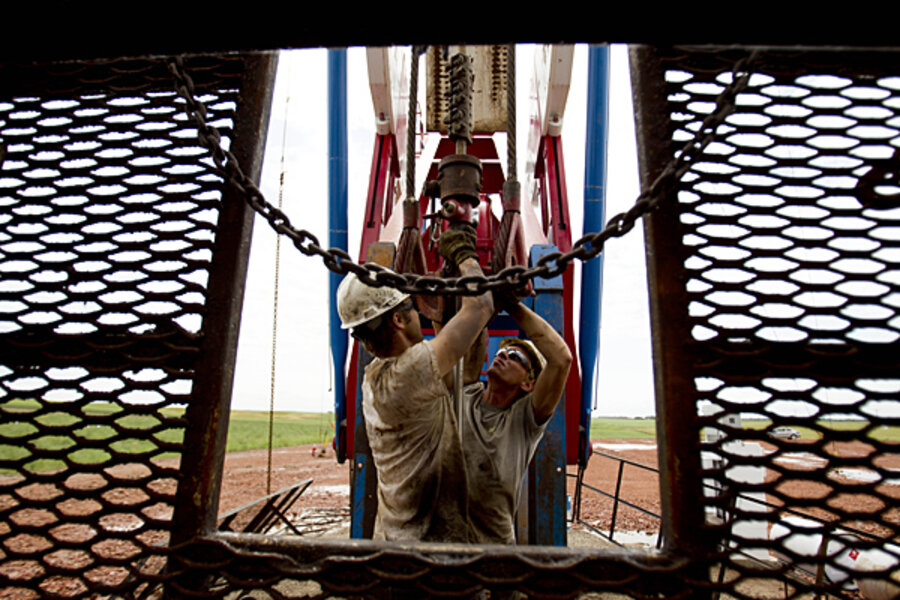US oil production will soar in 2013. Can it last?
Loading...
US crude oil production is expected to rise by 815,000 barrels per day in 2013, according to the US Energy Information Administration (EIA). That's the largest increase in annual output since the US started producing crude oil commercially in 1859, and it would bring this year's total output to 7.25 million barrels per day.
That's a lot of oil. The catch is that much of the boom is the result of so-called "tight" oil. Having tapped much of the country's "conventional" sources, energy companies have developed new drilling techniques to open up oil and gas resources previously thought unattainable.
It's why a rock formation in North Dakota called the Bakken Shale is suddenly ground zero for US oil production. In 2012, the Williston Basin, which includes the Bakken Shale formation, produced 720,000 barrels of oil per day. That's expected to rise to 950,000 barrels per day in 2013 and 1.13 million in 2014.
Those kinds of numbers wouldn't be possible if it weren't for a controversial method of drilling called hydraulic fracturing, or "fracking." Large volumes of fluid are propelled at high pressures into rock formations to open them up for production. The water-intensive technique has raised environmental concerns over the chemicals added to the water, and questions about what to do with the resulting waste water.
The advanced techniques also beg the question: How long can this boom last?
"Everyone in North Dakota is concerned about getting overextended and having some kind of a – even if it is not a bust – just a slowdown in the oil production," North Dakota Governor Jack Dalrymple told the Wall Street Journal in an interview last December.
Despite projecting robust near-term production growth, the EIA concedes that the newfound oil sources aren't bottomless.
"[D]iminishing returns to scale and the depletion of the high‐productivity 'sweet spots' are expected to eventually slow the rate of growth in tight oil production," reads the EIA's Feb. 14 Short-Term Energy Outlook Supplement. "It is difficult to predict when that inflection point will be reached because it can be pushed farther into the future by increases in the number of drilling rigs and further technological change."
There's also a question of energy infrastructure. The shale boom is only as good as the mechanisms companies have for transporting the product to where it is needed. Some say that system is lacking.
"I think people don't realize...all this oil production that's going to have to be moved great distances," Tom Kloza, chief oil analyst at the Oil Price Information Service, told EnergyWire. "I think it's a good thing we're producing a lot more oil, but you need to have people paying attention to the logistics that may prevent some of the benefits from being passed on to the public."
Maria van der Hoeven, executive director of the International Energy Agency, wrote in the Financial Times that pipeline links and export outlets "will ultimately be necessary to leverage the full potential and reap the benefits of the new American oil revolution."








